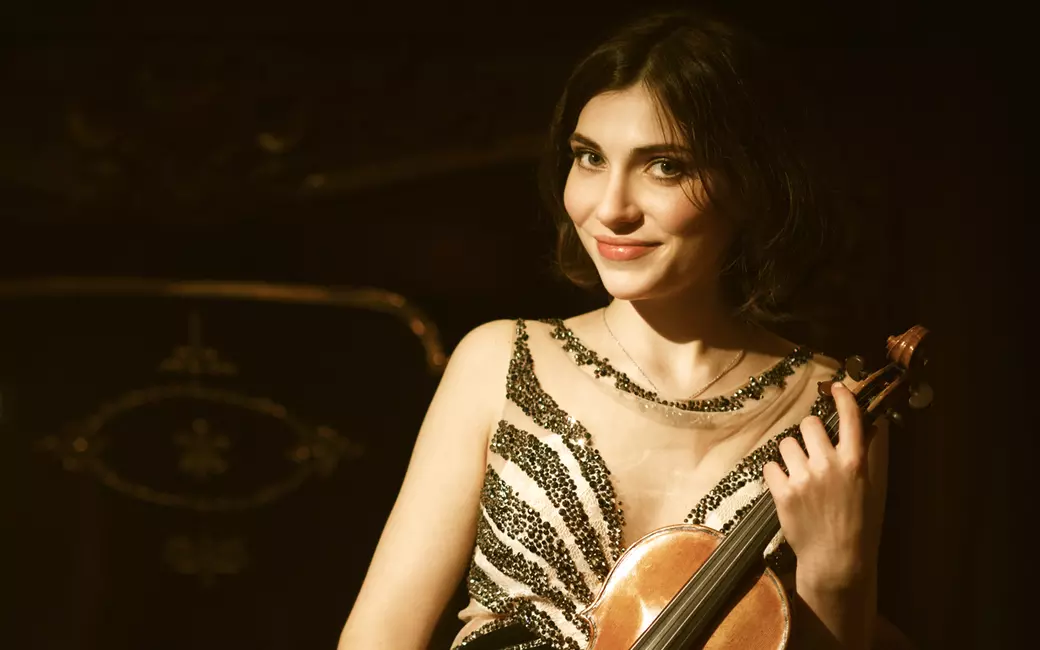At the 2018 Long-Thibaud-Crespin Competition in Paris, violinist Diana Tishchenko was awarded the Grand Prix by the panel of judges, presided over by Renaud Capuçon. She was also selected from among the six finalists to make a debut recording for Warner Classics. The result is this enticing album of sonatas by Ravel, Enescu, Ysaÿe and Prokofiev, on which she is partnered by the pianist Zoltán Fejérvári.
Diana Tishchenko, a “luminous” player in the words of the French magazine Diapason, was born in 1990 in Ukraine and is now a citizen of Lithuania. Before her victory in the Long-Thibaud-Crespin, she was a laureate in prestigious competitions in Germany, France, China and Russia. Trained in Kiev and Berlin, as concertmaster of the Gustav Mahler Youth Orchestra she performed with such conductors as Colin Davis, Antonio Pappano, Franz Welser-Möst, Herbert Blomstedt and Daniele Gatti, while as a chamber musician she has collaborated with such players as Gidon Kremer, Steven Isserlis and Christian Tetzlaff. The Strad has noted her " power to mesmerize the audience with her large gesture and strong personality”.
Winner of the 2017 Concours Musical International de Montréal, Hungarian pianist Zoltán Fejérvári has given recitals throughout Europe and the USA, and during the 2017-18 season, under the aegis of András Schiff, he made a number of appearances in Building Bridges, a concert series which highlights young pianists of unusual promise. As a concerto soloist, he has appeared with such conductors as Iván Fischer, Gábor Tákács-Nagy, Ken-Ichiro Kobayashi, and Zoltán Kocsis.
Tishchenko and Fejérvári form an extraordinary musical team. In May 2019, at the Abbaye de l’Epau in north-western France, they performed the Ravel, Enescu and Prokofiev sonatas that feature on this album. The writer for the blog Cyrano praised them without reserve: “I have just attended one of the finest concerts – if not the finest concert – that I have ever heard … the audience was immersed in the quintessence of music.” The online journal Toute la musique spoke of “the fusion of two exceptional musical personalities”, saying that their interpretation of Ravel’s jazz-inflected sonata left the listener “completely invigorated by a hot-and-cold shower,” while the Enescu, which draws on Romanian folk music, “vividly and movingly evoked the melancholy that imbues every expressive aspect of the work”.
Both those sonatas, like Ysaÿe’s Sonata No 3 (which was dedicated to Enescu), grew from the cultural melting pot that was Paris in the 1920s. Prokofiev’s Sonata No 1 dates from considerably later (1946), but the composer had based himself in Paris in the decade after the Russian Revolution and the influence of Ravel can be sensed in this work. Hearing Tishchenko and Fejérvári in the sonata, Toute la musique’s writer felt that: “We were constantly surprised by their inventiveness – it was completely fascinating … Not two interpreters playing together, but a true musical entity, an artistic fusion … They played as if each note were being created in real time … deploying an infinitely large palette of colours and nuance – the possibilities were inexhaustible.”
Like Diana Tishchenko, Prokofiev was born in Ukraine – as was the great violinist David Oistrakh, the dedicatee of the Sonata No 1 – maybe it is no coincidence that Tishchenko was a prizewinner at the David Oistrakh International Violin Competition in Moscow. Like all the sonatas on the album, the Prokofiev is characterised by an element of fantasy, whether in the spirit of jazz, folk music or recitative, typifying an era in which the boundaries of form and harmony were dissolving, and musicians from diverse cultural backgrounds were travelling the world and sharing ideas and inspiration.
